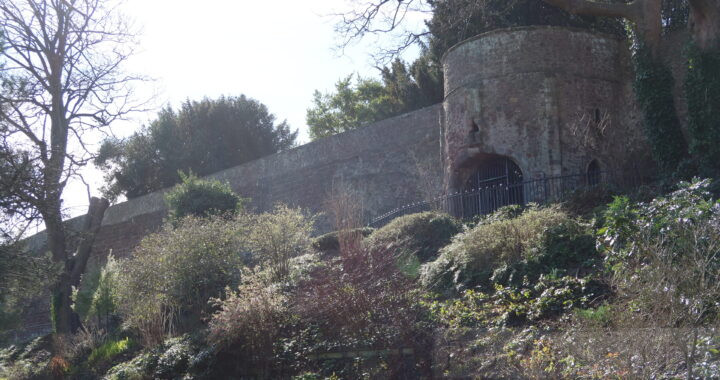- Exeter is a cathedral city located on the river Exe in the County of Devon in the South West Region of England.
- It was a Roman Legionary Fortress, Isca Dumnoniorum, which after c. 70 CE, became the capital city of the Domnonii Tribe, with a smaller fort and Roman harbour at Topsham.
History
- The Fortress was occupied by the Legio II Augusta between 56-66 CE, after which it moved to Gloucester and then eventually on to Caerleon, known as Isca Augusta.
- A number of Roman coins have been found, although none date after 380 CE.
- The Roman Forum, Basilica and Baths are too close to Exeter Cathedral to be excavated and displayed.
Roman Sites
- Roman Walls
- The medieval city walls were built on top of the Roman Ramparts of the Fortress, with the Roman construction visible in the lower part of the walls.
- The entire circuit can be walked with over 70% of the walls still intact.
Museums
Royal Albert Memorial Museum and Art Gallery
- Located at Queen Street, Exeter. Open 10-5pm, closed Mondays.
- The Museum holds four main Collections of Antiquities, Art, Natural History and World Cultures.
- Roman Empire Collection
- The artefacts include Roman Amphorae, Brooches, Beads, Coins and Pottery.
- Seaton Roman Hoard
- 22,888 Roman Coins (Nummi dated between 260-348 CE)
- The Erme Ingots:
- These Artefacts are a group of 44 Tin Ingots were found in 1992 on the bed of the River Erme Estuary, 3 miles (5km) to the west of Burgh Island, which are thought to be either from the Bronze Age or the Iron Age.
- The Ingots are round, oval and two are H-shaped, which would match the description by Diodorus Siculus (c.90-30 BCE) of Tin Ingots from southwest Britain in the 1st century BCE.
- Roman Empire Collection
Roman Roads
- Fosse Way
- Exeter-Cirencester–Lincoln
- Iter XV and Iter XII (sameroute)
Roman Walls, Northernhay Gardens, Exeter

